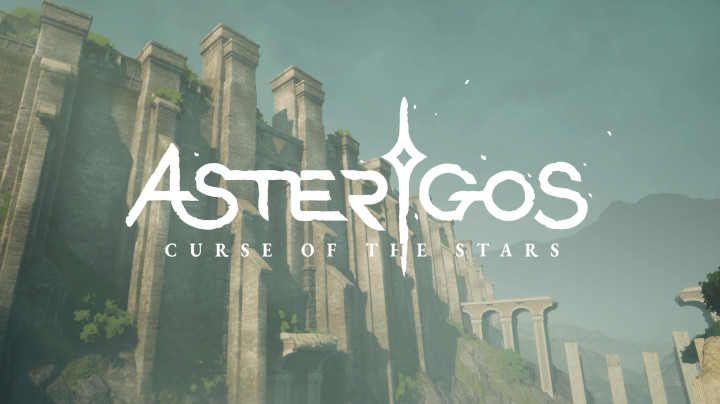
I got to play Asterigos: Curse of the Stars a little bit ahead of its October 11 launch, and I’ve been immersed in its faux-Greek-mythology world for about a week now. At this point, I’ve spent enough time with it to answer the big question that folks are certainly going to be asking about the game: Is Asterigos: Curse of the Stars a Soulslike?
The simple answer is no, Asterigos is not a Soulslike, at least not in any of the ways that really matter. However, it draws inspiration from FromSoftware’s Souls games in a lot of not-so-subtle ways. I think this is a distinction that deserves a little bit of clarification, so let me explain a few key points in greater detail.
Souls and Bonfires
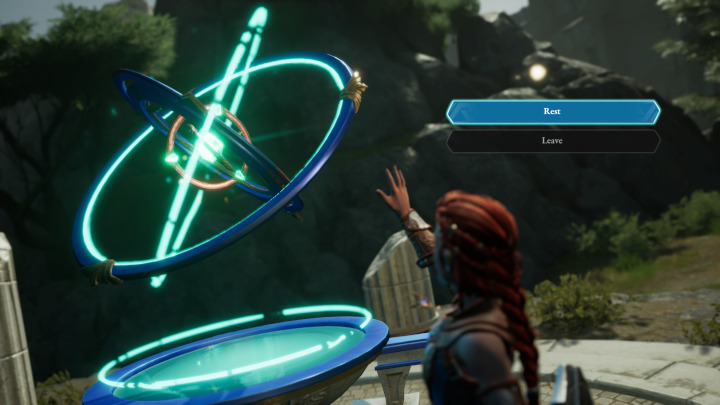
For me, the most crucial quality a game needs if I’m going to classify it as a Soulslike is the equivalent of Dark Souls‘ Souls/bonfires mechanic. In Dark Souls, you collect “souls” from your enemies when you die (or blood echoes in Bloodborne, or runes in Elden Ring). You then spend those souls at a checkpoint (bonfire) to increase your level, or at various vendors to buy trinkets and whatnot. If you are killed, you drop all of the souls you have on you at the time, though you can reclaim them if you make it back to the spot where you died. If you die a second time, though, all those souls are gone forever.
I tend to point to this as one of the fundamental elements in determining whether a game is a Soulslike or not.
Asterigos: Curse of the Stars has a similar system, but there are some key differences. In Asterigos, you collect Stardust from enemies that you kill, similar to souls in Dark Souls. However, your level-up system functions more like a traditional RPG, where XP accumulates in a bar, and when that bar fills up you level up. You don’t spend Stardust to level up.
Further, you don’t drop Stardust when you die. Well, you drop some, but just a fraction of it. There’s a cost penalty for death, but it’s a percentage of your Stardust, and there’s no way to find your corpse to reclaim that lost Stardust. It’s just gone.
There is a perk you can unlock called Treasure Hunter, which increases the percentage of Stardust that you drop when you die (with the benefit of making rare enemy drops more common). This makes the Stardust system feel slightly more Soulslike, but it’s definitely still a departure from the souls/bonfire mechanic.
Now, there are checkpoints called Conduits, and they function similarly to bonfires, in that resting at one will reset all enemy locations (except for bosses). So you can farm Stardust in a similar manner to how you’d farm souls in Dark Souls.
So you can see what I mean: There are clear similarities to the Soulslike souls/bonfire system, but the changes are enough to separate it from the Soulslike genre.
Weapon upgrades
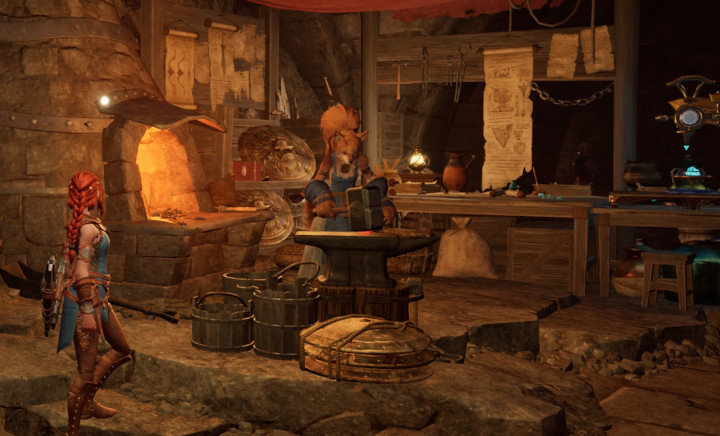
Asterigos has a very similar weapons upgrade system to Dark Souls/Elden Ring. You take your weapon to a blacksmith, who can upgrade your weapon for a set cost, as long as you have the correct materials. In Dark Souls, the required material is Titanite, and in Elden Ring this is Smithing Stones. There are higher-tier versions of these materials, which are required for enhancing a weapons beyond a certain level. In Asterigos, the resource is called Starite. The lowest tier is the Starite Ore Fragment, and the next tier up is the Starite Ore Sliver.
So in Asterigos, upgrading your weapons is pretty much the same as in Dark Souls or Elden Ring. The blacksmith is named Vulcane, and she can be found on the outskirts of Shelter, which is your base of operations.
Combat
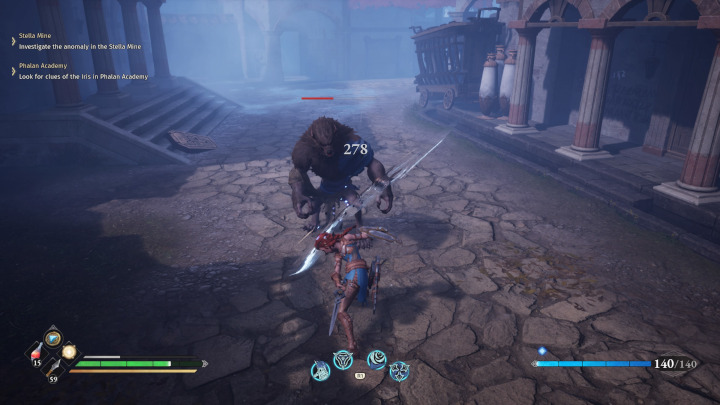
Combat is a huge part of what makes the Souls games tick. Dark Souls has this slow, deliberate combat style, where you can practically feel the weight of every weapon. It’s a difficult system to master, but once it clicks, it’s immensely satisfying.
Asterigos opts for a much lighter, nimbler combat style, with more forgiving invulnerability windows during dodges, as well as easier interrupts and stuns. It’s faster than you’d expect from a true Soulslike, and it’s much more immediately intuitive. It’s forgiving enough to let you be pretty sloppy with your approach. If you’re the type who loves Dark Souls for its combat, Asterigos is definitely going to feel weightless and oversimplified.
That’s not a bad thing, as it makes the game a bit more accessible, but it’s also another point of separation from the Soulslike genre.
Of course, there is the option to lock onto your target using the R3 button, which was totally taken from Dark Souls.
Stage layouts
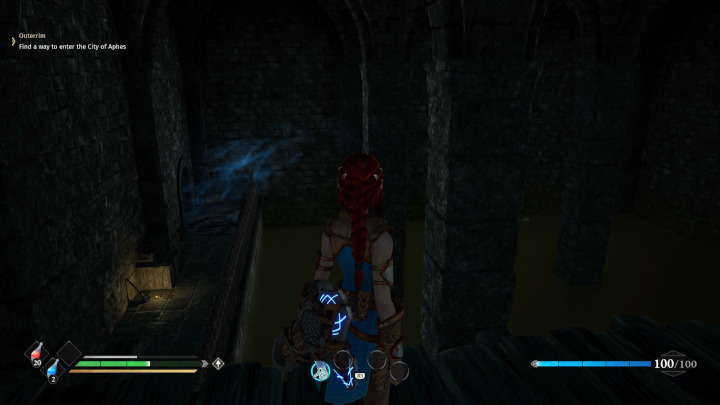
Dark Souls and Bloodborne do this thing with their world design where you’ll wander super far away from a checkpoint, only to unlock a door or elevator that takes you pretty much straight back to that checkpoint. So you feel like you’re miles from where you started before you realize you just walked in a huge freaking circle.
Asterigos definitely takes a page from Dark Souls here. These stage layouts are quite similar in design philosophy, with tons of unlockable doors and shortcuts crisscrossing the world to make the whole thing feel tightly packed.
In fact, Asterigos has you enter its main city Aphes through a straight sewer section, which brings to mind the connecting tunnel between Firelink Shrine and the Undead Burg in Dark Souls.
Boss fights
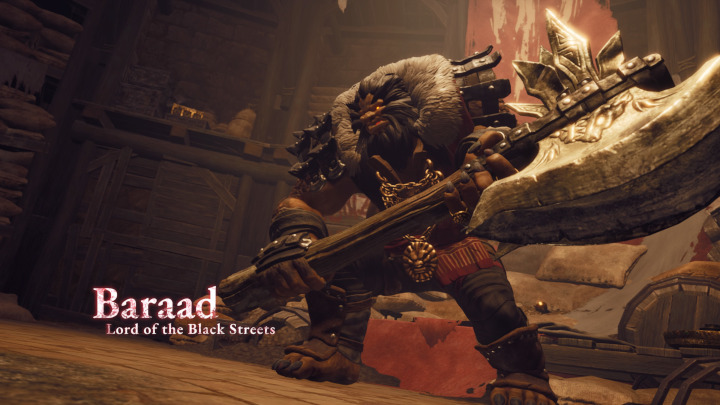
In the Souls games, boss fights have a very specific feel to them. You know what I’m talking about: The boss drops in, then the choir swells and the strings crescendo and there are deeply resounding bell sounds and all that. Then the boss’s name appears and a red bar fills at the top of your screen, signifying that boss’s hit points.
Asterigos follows this formula pretty much exactly. Everything I’ve described above could be said about the boss fights in Asterigos.
Plus, while the game’s first boss is super easy (the Souls games tend to pummel you with a difficult boss fight right away to test your mettle), later boss fights do pose a decent challenge. Not nearly to the level of, say, Godrick the Grafted, but Aterigos has some pretty brutal boss fights.
General atmosphere
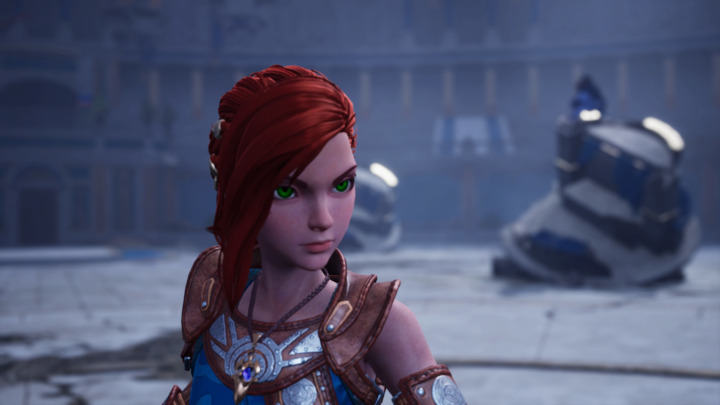
Dark Souls features a world that’s dripping with muck, where a sense of dread hangs in the air at all times. People live in a constant state of torment, in many cases plagued with undeath.
While Asterigos features a pretty bleak premise, where inhabitants of this world must consume Stardust to stave off an impending agony, the world is presented with a lot more color. In fact, visually, I would say that Asterigos more closely resembles Immortals Fenyx Rising than Dark Souls.
The general aesthetic is supposed to feel like ancient Greece, so think marble statues and lots of pillars and whatnot. That’s another thing Asterigos has in common with Immortals Fenyx Rising (and both games also have a redheaded female protagonist to really drive home the visual similarities).
Door-knocking
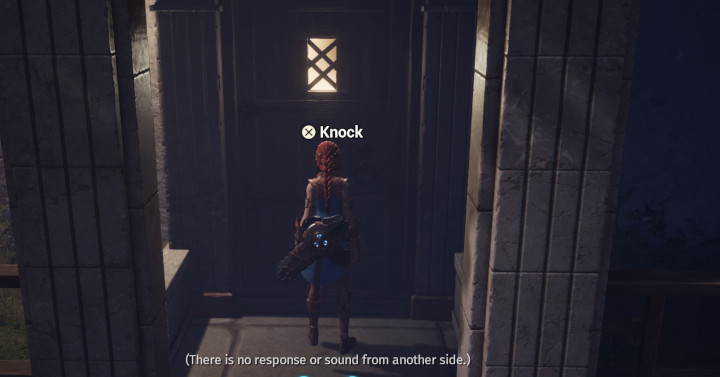
In Bloodborne, you could talk to NPCs by knocking on doors. Asterigos has this exact same game mechanic, allowing you to delve a little deeper into the lives of the inhabitants of Aphes. In some cases, this even opens up chains of side quests, just like in Bloodborne.
It’s a small thing, I know, but it’s a thing.
Dodge/roll is mapped to the circle button on PlayStation
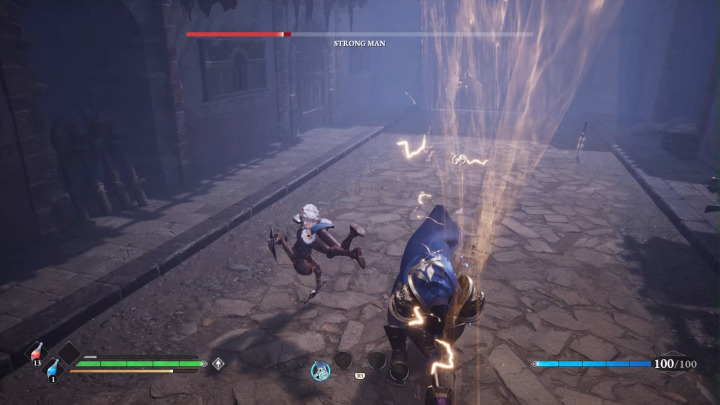
The last thing I want to point out is that Asterigos maps the dodge/roll move to the circle button on PS4/PS5. Dark Souls has pretty much standardized this to the point that it feels weird when games stray from it. So if you’re a circle-dodger, you’re going to feel right at home in Asterigos.